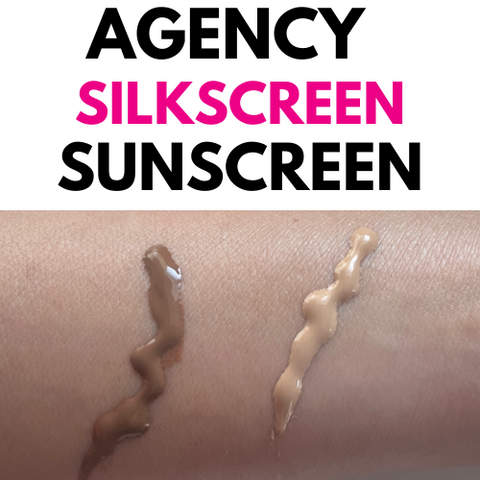How do you know if your have Rosacea, or sensitive skin…or both?
Do you have a red, flushing complexion? Do you have signs of capillary axtivity?
Does your skin have irritations or flare up?
April is National Rosacea Awareness Month
According tot the National Rosacea Society, it is estimated that at least 16 million Americian and 45 milion people around the world may suffer from Rosacea. The numbers of people who have Rosacea may actually be higher since many people who don’t know realize that they Rosacea .
Please remember that my blog post and my video are for educational purposes only. Please don’t use the information on this post or in this video to self diagnose or self treat your symptoms.
Please refer to a professional to find out if you have Rosacea and to find out what the best options are for you .
Early Signs of Rosacea may include:
-Obvious lasting redness (doesn’t seem to go away)
-Redness is located in the center of the face (chin, nose, cheeks, forehead)
-Irritated skin
-Dilated veins and capillaries
-Papules/pustules
-Fibroplasia-Process of forming fibrous tissue
-Starts to develop at an early age
-outbreaks can last for weeks
-can be easily irritated by acne products/ chemical sunscreen/cosmetics
Stage 2 of Rosacea:
-continuous redness of skin
-more capillary activity becoming apparent
-breakouts may last for weeks
-pores may become enlarged
-sun can cause distinct scarring
-if bald-pustules can extend into the scalp area
-can spread to the neck, throat behind the ears and even on the back
-Rosacea can even involve the eyes (symptoms can include dry, red, irritated swollen eyelids, conjunctivitis, inflamed cornea/iris
Stage 3 of Rosacea:
-Deeper long lasting redness
-dialated veins especially around the nose
-skin texture changes giving the appearance similar to an orange peel (fibroplasia) excess tissue growth)
-the appearance of the nose may begin to change (rhinophyma-where the nose looks red, swollen and bulbous)
Rosacea tends to run in families. It is also more common in people who have Irish, Scottish backgrounds or from Scandinavian countries. Women with fair skin and between the ages of 30-60.
Common Triggers that can inflame Rosacea include:
-Stress
-Sunlight
-Spicy foods
-Dairy products especially sour cream.yogurt, and cheese
-Chocolate
-Citrus Fruits
-Soy Sauce
Extreme Temperatures
-Drugs/meds that dilate blood vessels such as blood pressure meds/corticosteroids
-Alcohol
-Cosmetics/Skin care products that have artificial dyes, colors or fragrances
Rosacea and Ingredients to avoid:
-Cleansers that have a high amount of sulfates, AHA, beads
-Menthol, Peppermint
-Witch Hazel-many toners may have this or in a combination with alcohol
The goal for Rosacea and/or Sensitive skin is to :
-Restore compromised skin
-Reduce inflammation
-Soothe/Nourish
-Support wound healing
-Strengthen blood vessels and capillary walls to prevent further capillary inflammation which can lead to broken capillaries.
Rosacea and exfoliation:
Rosacea prone skin still needs some exfoliation to help with the texture of the skin and to reduce papules and pustules. However, AHA based exfoliants that include glycolic acid or Retin A may be too irritating and should be avoided.
If the skin can tolerate exfoliants, BHAs such as Mandelic Acids, Hibiscus Acid , Salicyclic Acid may be better . However, Rosacea and sensitive skin may not be able to tolerate this.
Ingredients such as:
–SeaBuckthorn Oil which has a good range of antioxidants and Omega essential fatty acids will help compromised skin
See my review here specifically on ALL the great benefits of Seabuckthorn Berry Oil has.
-Chamomile extract
-Calendula extract
-Cucumber extract
-Beta Glucan derived from oats can help calm, soothe, and increase the skins ability to hold in the moisture
***PRO TIPS***
Most Rosacea prone and sensitive skin types react to chemical based sunscreens. Physical based sunscreens (zinc oxide and Titanium Oxide) work better with Rosacea and sensitive skin types). Zinc Oxide is also a natural anti inflammatory.
A good match is Lira Clinical Sunscreen both in Oil Free and Hydrating. They also contain antioxidants, peptides and plant stem cells. Both formulations help with uneven skin tone with regular usage.
**DIY HOME REMEDY for Rosacea and Sensitive Skin**
Turmeric Mask:
Use Equal parts:
-Turmeric
-Raw Honey
-Organic Milk or plain yogurt
Mix well.
Apply on dry freshly cleansed face and leave on for 20 minutes.
If your skin tends to break out with oils or creams, a water based hydrating gel that reduces inflammation and helps the skin increase its ability to hold onto the moisture, please look into the Rosacalm Serum.
Rosacea (especially in the early stages), can be confused with persistent sensitive skin. Both of these skin conditions need ingredients to help soothe and calm down inflammation .
Again, if you think that you may have Rosacea, please see a doctor/dermatologist to make sure you do so you can take the necessary steps in taking care of your skin and to prevent further potential complications with your skin.
More posts and videos to follow for Rosacea and Sensitive skin
Follow us@ :
YouTube Channel:https://www.youtube.com/channel/UC4XGWX6eheTisHo8UBsdOWA
Instagram:@GoSeeChristy
Facebook:https://www.facebook.com/goseeChristyBeautyBoutique/
Twitter:https://twitter.com/goseechristy
Pinterest:https://www.pinterest.com/goseechristy/




